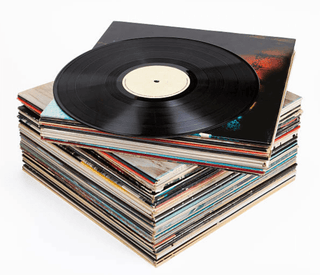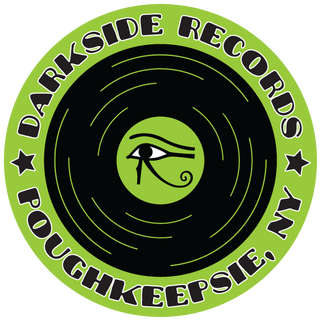John McGuire- Pulse Music

Presented together for the first time, American composer John McGuire's Pulse Music series (1975-1979) blurs the popular narrative that Minimalism was a reaction against Europe's angular, intellectual, inscrutable high-modernism. McGuire, born in California, studied at Occidental College in Los Angeles and UC Berkeley before going to Europe to study with Karlheinz Stockhausen, Krzysztof Penderecki, and Gottfried Michael Koenig. His compositions lock serialism's warped geometries onto an evenly spaced grid, perfectly preserving serial music's multi-dimensionality while smoothing it's wildest disjunctures and sharpest angles. If serialism is Montreal's Habitat 67 modular housing complex, McGuire's Pulse Music compositions are the primary-colored grids of Le Corbusier's L'Habitation apartment complex - an exuberant expression of the same materials and principles. Every layer of pulses is made distinct through it's timbre, register, and tempo. We hear them as a plurality, organized like stars in the sky. Every so often the sky rotates and the stars appear in a different arrangement. Our ear naturally starts to draw connections and, as it sweeps between one layer and another, what was discrete becomes continuous. Pulses become flows; quantitative reality becomes qualitative experience. McGuire's pulse pieces were realized electronically, in the newly built Studio for Electronic Music at the State University of Cologne and WDR, but Pulse Music II adapted his ideas to an orchestral canvas. Commissioned retrospectively by the composer and radio producer Hans Otte for his Pro Musica Nova festival at Radio Bremen. Alongside the Bremen orchestra, conducted by Klaus Bernbacher, were four pianists-Christoph Delz, Herbert Henck, Deborah Richards, Doris Thomsen-and McGuire himself playing a series of twelve drone-like chords on the organ. The techniques of the electronic Pulse Music pieces required a speed and precision too great for live musicians, so for Pulse Music II McGuire adapted his method to an expanding progression of durations; this had the advantage of being much slower and requiring none of the carefully calibrated tempo changes of Pulse Music I or III. It was still based, says the composer, "on what seemed to me an interesting foray into a completely different kind of time structure. Complex time structures had, by 1975, become a condition for me in two senses: a compositional requirement and maybe an illness." The present recording was made by Radio Bremen at the work's first and only performance, and has been held in their archive until now. "108 Pulses" - originally composed a proof-of-concept piece and realized as a single, repeating loop in a 20 minute tableau - is also presented here for the first time.
Track List
- Pulse Music I (1976)
- Pulse Music II (Live 1978 Pro Musica Nova Festival)
- Pulse Music III (1979)
- 108 Pulses (1975)
Shop online 24/7 at Darkside Records.
Follow us on Instagram.
Presented together for the first time, American composer John McGuire's Pulse Music series (1975-1979) blurs the popular narrative that Minimalism was a reaction against Europe's angular, intellectual, inscrutable high-modernism. McGuire, born in California, studied at Occidental College in Los Angeles and UC Berkeley before going to Europe to study with Karlheinz Stockhausen, Krzysztof Penderecki, and Gottfried Michael Koenig. His compositions lock serialism's warped geometries onto an evenly spaced grid, perfectly preserving serial music's multi-dimensionality while smoothing it's wildest disjunctures and sharpest angles. If serialism is Montreal's Habitat 67 modular housing complex, McGuire's Pulse Music compositions are the primary-colored grids of Le Corbusier's L'Habitation apartment complex - an exuberant expression of the same materials and principles. Every layer of pulses is made distinct through it's timbre, register, and tempo. We hear them as a plurality, organized like stars in the sky. Every so often the sky rotates and the stars appear in a different arrangement. Our ear naturally starts to draw connections and, as it sweeps between one layer and another, what was discrete becomes continuous. Pulses become flows; quantitative reality becomes qualitative experience. McGuire's pulse pieces were realized electronically, in the newly built Studio for Electronic Music at the State University of Cologne and WDR, but Pulse Music II adapted his ideas to an orchestral canvas. Commissioned retrospectively by the composer and radio producer Hans Otte for his Pro Musica Nova festival at Radio Bremen. Alongside the Bremen orchestra, conducted by Klaus Bernbacher, were four pianists-Christoph Delz, Herbert Henck, Deborah Richards, Doris Thomsen-and McGuire himself playing a series of twelve drone-like chords on the organ. The techniques of the electronic Pulse Music pieces required a speed and precision too great for live musicians, so for Pulse Music II McGuire adapted his method to an expanding progression of durations; this had the advantage of being much slower and requiring none of the carefully calibrated tempo changes of Pulse Music I or III. It was still based, says the composer, "on what seemed to me an interesting foray into a completely different kind of time structure. Complex time structures had, by 1975, become a condition for me in two senses: a compositional requirement and maybe an illness." The present recording was made by Radio Bremen at the work's first and only performance, and has been held in their archive until now. "108 Pulses" - originally composed a proof-of-concept piece and realized as a single, repeating loop in a 20 minute tableau - is also presented here for the first time.
Track List
- Pulse Music I (1976)
- Pulse Music II (Live 1978 Pro Musica Nova Festival)
- Pulse Music III (1979)
- 108 Pulses (1975)
Shop online 24/7 at Darkside Records.
Follow us on Instagram.







